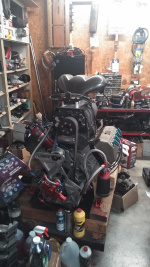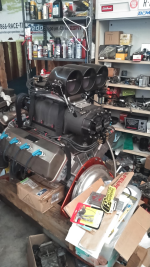thebluelion
Recruit
- Joined
- Aug 15, 2009
- Messages
- 3
Hi there.
I picked up a pretty sweet looking 20 horse two stroke on Craigslist. I immediately jumped into going through it before putting any trust into it. I hope to get it into good shape whatever the level of work required. I will not be selling it to get something else, this is the challenge I'm taking on. I have zero experience with two strokes and outboards. I have advanced experience in building nitrous big block and small block chevys.
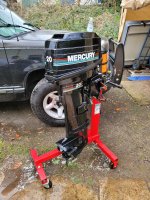
Manual and Electric start. Was a tiller but someone did a DIY manual conversion.
Serial: 0D149460 I've been unable to find any info on this serial. I'm guessing it's a 1993 based on decals.
Here's what I've found/tried so far.
Did a cold compression test. Both spark plugs were oily and a bit fouled.Came up with 62 psi in both upper and lower cylinders. My gauge is not defective. Throttle open or closed made no difference. I'm aware of the cold vs warm testing opinions, but I'm reading 62lbs. After searching the internet I found two other threads with owners of similar vintage 20hp Mercury's that saw 62lbs in both cylinders, but neither thread had a conclusion. This makes me think there's a failure point in common.
I laid the outboard down with spark plug holes up, and gave each cylinder a couple of squirts of ATF to see if it was worn rings. Moved pistons up and down to distribute and titled it back up. Did another compression test. 62lbs in each cylinder. Dropped a boroscope in and saw some carbon on pistons, but nothing that concerned me. Cylinder walls looked OK, but I'm familiar with iron cylinder walls and cross hatching. I'm not sure of what I have is chrome, or nikasil, or mercasil, I'm uneducated.
It looks like there is no head or head gasket, just a water cover. I decided to pull the exhaust housing cover to inspect pistons and rings. All the SS bolts came out with ease, though I was really sweating a breakage. I did notice the exhaust cover gasket was broken but that may have happened during removal. To my eye, the pistons looked to be in great shape, from what I could tell they have very little wear. The rings look to be iron, were not stuck or carboned up, and moved and sprung back when pushed on. The cylinders do show some wear/scoring/waviness at the bottom of its stroke, and the rest looks good to me but again, I'm not sure what good is supposed to look like on these. I did not feel any play in the wrist pins when I manually moved the flywheel.
I did another compression test with the exhaust cover removed and got the same 62 lbs. I know you are likely thinking it's my gauge but it's verified good. The engine can be pulled though a full cycle with my pinky so I'm believing it's really that low.
I just need to hear from anybody that might know of something I'm just completely missing. Is there a compression release on these? If the rings are just not doing their job wouldn't the ATF have shown a change? I don't see how both cylinders could be worn at the exact same amount to be at the exact same PSI. To me that says there is a shared point between the two that letting compression escape somehow? Do Reed valves effect compression? I'd really like to nail down if I'm missing something before actually attempting to fire it and I'm well aware I am out of my element here. Any advice is much appreciated unless it's "sell it and get a new four stroke" haha
I picked up a pretty sweet looking 20 horse two stroke on Craigslist. I immediately jumped into going through it before putting any trust into it. I hope to get it into good shape whatever the level of work required. I will not be selling it to get something else, this is the challenge I'm taking on. I have zero experience with two strokes and outboards. I have advanced experience in building nitrous big block and small block chevys.

Manual and Electric start. Was a tiller but someone did a DIY manual conversion.
Serial: 0D149460 I've been unable to find any info on this serial. I'm guessing it's a 1993 based on decals.
Here's what I've found/tried so far.
Did a cold compression test. Both spark plugs were oily and a bit fouled.Came up with 62 psi in both upper and lower cylinders. My gauge is not defective. Throttle open or closed made no difference. I'm aware of the cold vs warm testing opinions, but I'm reading 62lbs. After searching the internet I found two other threads with owners of similar vintage 20hp Mercury's that saw 62lbs in both cylinders, but neither thread had a conclusion. This makes me think there's a failure point in common.
I laid the outboard down with spark plug holes up, and gave each cylinder a couple of squirts of ATF to see if it was worn rings. Moved pistons up and down to distribute and titled it back up. Did another compression test. 62lbs in each cylinder. Dropped a boroscope in and saw some carbon on pistons, but nothing that concerned me. Cylinder walls looked OK, but I'm familiar with iron cylinder walls and cross hatching. I'm not sure of what I have is chrome, or nikasil, or mercasil, I'm uneducated.
It looks like there is no head or head gasket, just a water cover. I decided to pull the exhaust housing cover to inspect pistons and rings. All the SS bolts came out with ease, though I was really sweating a breakage. I did notice the exhaust cover gasket was broken but that may have happened during removal. To my eye, the pistons looked to be in great shape, from what I could tell they have very little wear. The rings look to be iron, were not stuck or carboned up, and moved and sprung back when pushed on. The cylinders do show some wear/scoring/waviness at the bottom of its stroke, and the rest looks good to me but again, I'm not sure what good is supposed to look like on these. I did not feel any play in the wrist pins when I manually moved the flywheel.
I did another compression test with the exhaust cover removed and got the same 62 lbs. I know you are likely thinking it's my gauge but it's verified good. The engine can be pulled though a full cycle with my pinky so I'm believing it's really that low.
I just need to hear from anybody that might know of something I'm just completely missing. Is there a compression release on these? If the rings are just not doing their job wouldn't the ATF have shown a change? I don't see how both cylinders could be worn at the exact same amount to be at the exact same PSI. To me that says there is a shared point between the two that letting compression escape somehow? Do Reed valves effect compression? I'd really like to nail down if I'm missing something before actually attempting to fire it and I'm well aware I am out of my element here. Any advice is much appreciated unless it's "sell it and get a new four stroke" haha
Attachments
-
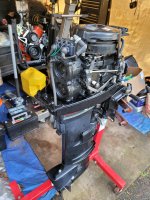 20220326_105032.jpg1.7 MB · Views: 9
20220326_105032.jpg1.7 MB · Views: 9 -
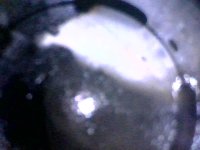 20220326_111928.jpg155.4 KB · Views: 8
20220326_111928.jpg155.4 KB · Views: 8 -
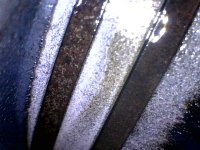 20220326_112116.jpg218.4 KB · Views: 7
20220326_112116.jpg218.4 KB · Views: 7 -
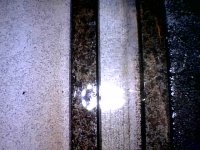 20220326_111113.jpg224.3 KB · Views: 8
20220326_111113.jpg224.3 KB · Views: 8 -
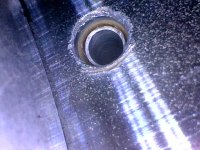 20220326_111225.jpg221.8 KB · Views: 9
20220326_111225.jpg221.8 KB · Views: 9 -
 20220326_111550.jpg298.8 KB · Views: 9
20220326_111550.jpg298.8 KB · Views: 9 -
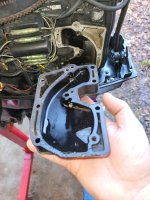 20220326_111752.jpg1.9 MB · Views: 7
20220326_111752.jpg1.9 MB · Views: 7 -
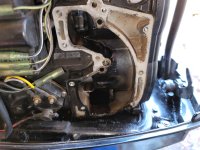 20220326_111724.jpg3 MB · Views: 8
20220326_111724.jpg3 MB · Views: 8 -
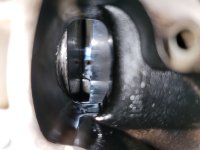 20220326_111708.jpg2.6 MB · Views: 8
20220326_111708.jpg2.6 MB · Views: 8 -
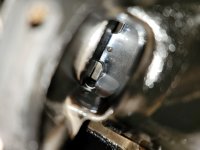 20220326_111648.jpg3.2 MB · Views: 9
20220326_111648.jpg3.2 MB · Views: 9 -
 20220326_111630.jpg1.4 MB · Views: 9
20220326_111630.jpg1.4 MB · Views: 9




















